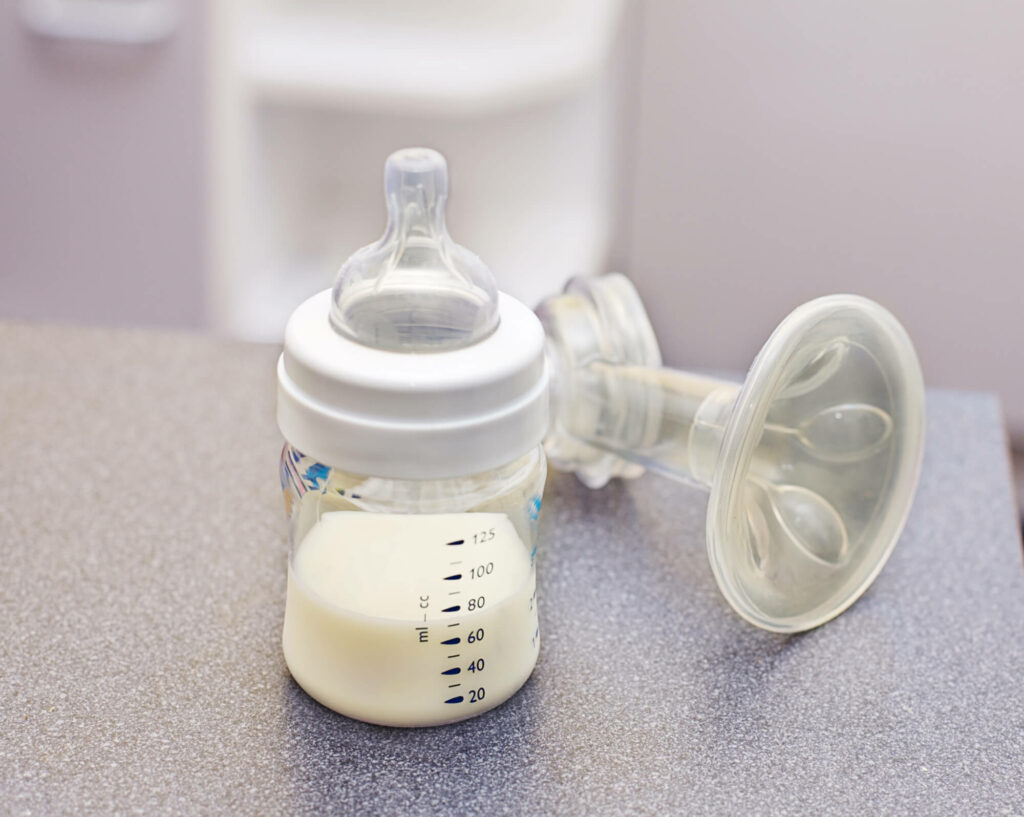Collecting and freezing breast milk has become a norm for many breastfeeding parents, especially those traveling, and would love to create a stockpile.
Before freezing your breast milk, you must understand how to thaw and warm the milk without interfering with the nutrients.
Your little one’s health comes first, so you should maintain the quality of the expressed milk by following the set guidelines.
Let’s check some guidelines and precautions to observe when freezing, thawing, and warming the breast milk.
Keep reading.
What to Do Before Handling Breast Milk
Before expressing the milk, wash your hands with soap and water, and an alcohol-based sanitizer with at least 60% alcohol will work when water isn’t available.
You can either express the milk with your hands or use a pump. Suppose you have a pump; make sure it’s clean before using it. If you notice moldy tubing, discard it immediately.
When sharing a pump, clean the power switch, pump dials, and the countertop using a disinfectant wipe.
Storing and Warming Frozen Breast Milk
Freezing breast milk gives you feeding flexibility, especially if you plan to travel or it’s time to get back to work. Frozen breast milk can go for up to a year, depending on your freezer.
Don’t worry about the macronutrients; they remain intact even after freezing the milk for at least nine months. Before storage, remember to label each container with the date you expressed the milk.
You can store the milk in breast milk storage bags or food-grade containers with airtight lids. Don’t use disposable bottles; they aren’t meant for breast milk. Avoid BPA-containing plastics, which are mostly labeled with recycle symbol number 7.
Hint: Store the milk in two to four ounces in each bag to avoid wastage. And another thing, breast milk expands when it freezes, and it needs some additional space. Keep the milk at the back of the freezer.
At room temperature, the milk is okay for four hours, and when it is cleanly and safely expressed, it can go up to 8 hours. A refrigerator will keep the milk safe for up to 8 days. A normal freezer can keep the milk for nine months, while a deep freezer will keep it for 12 months.
Additionally, if you take the milk to the caregiver, add the child’s name on the bottle to avoid mix-up. An insulated cooler will help you store breast milk when traveling, and you should use the milk immediately after getting to your destination.
Can I Defrost Breast Milk in a Bottle Warmer?
Yes, most models of baby bottle warmers help in defrosting breast milk and baby food in four minutes or less, depending on the amount in the bottle.
Manufacturers argue that bottle warmers heat the milk evenly and don’t cause hot spots that may burn the baby’s mouth. However, some still believe that steeping the milk in warm water is easier.
A potential disadvantage of some bottle warmers is they can overheat the milk killing important nutrients if not well set.
Thawing of Breast Milk
When taking breast milk from the freezer, don’t forget the first-in, first-out rule to prevent the milk quality from reducing with time.
Start by removing the milk from the freezer and place it in the refrigerator to thaw overnight. After the overnight stay, use the milk within 24 hours from when the milk is fully thawed.
You can place the milk bottle in a bowl of warm water if you intend to use the milk right away.
Never use a microwave to thaw frozen milk. It makes some parts of the milk hot while others remain too cold.
How Do You Thaw Frozen Breast Milk in a Bottle Warmer?
Put the bottle in the warmer and follow your preferred warmer’s instructions. I love that some warmers are Bluetooth-controlled, and you can use your device to set it.
Can you Thaw Freshly Expressed Breast Milk?
No. Freshly expressed milk is already at the right temperature, and thawing it will alter its nutrients. Put some drops on your wrist to test the temperature. Use the milk within two hours after expressing, and if milk remains after feeding, please discard it.
Can I Add Fresh Breast Milk to the One in the Freezer?
Adding fresh milk to the one in the freezer is possible, but you need to cool the fresh milk using ice coolers thoroughly. Instead of mixing the milk, I prefer you get another container or bag for the fresh milk.
Is There a Difference in Smell Between Fresh and Thawed Breast Milk?
The smell might be slightly different, but it depends on your diet. The different odor in thawed milk doesn’t make it unsafe for your baby.
Final Thoughts
The aim of freezing your breast milk is to provide enough supply for your kid when you are not around. On a journey, carry some ice coolers to keep the milk frozen. Keep the apparatus used in collecting the milk clean and ensure you collect the milk in a safe procedure. Remember that it’s recommended that kids should exclusively feed on breast milk for up to 6 months hence the need to have a stockpile.














